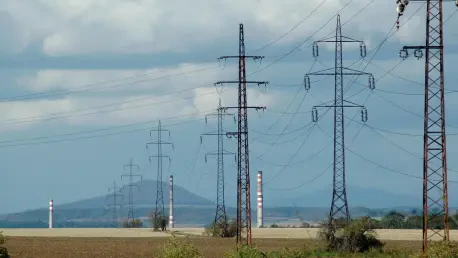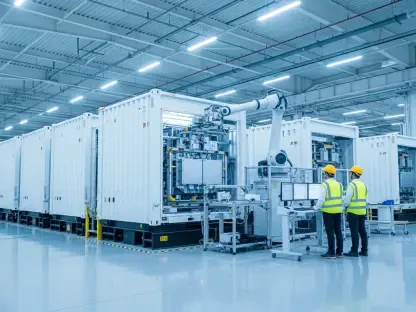Listen to the Article
The world is facing increasing digitalization as technology advances. Unsurprisingly, these advancements are becoming indispensable in multiple industries, including energy. There has been a rapid rise in the use of artificial intelligence (AI) to support power sources, particularly as the industry shifts toward a renewable landscape. By using this powerful tool to optimize energy systems, many companies have balanced supply and demand. AI integration has its risks, but the benefits seemingly outweigh the challenges.
Continue reading to discover how innovation has led to the efficient coupling between AI and the energy sector. This article also reviews the reasons power companies are integrating intelligent systems into electricity sources and the challenges they face. The information is invaluable for organizations looking to shift toward additional solutions.
Is It Useful to Combine Intelligent Systems With Energy Sources?
In the move toward sustainability, AI systems help maximize decarbonization efforts and increase energy production. The electricity industry has grappled with volatility from many factors, including climate disruptions, renewable energy difficulties, and unpredictable demand patterns. If intelligent systems are well-planned and integrated, they can transform how the power industry operates. Combining AI with energy is a valuable way to reduce greenhouse gas emissions and enhance performance. Widespread innovation and integration of AI enable the sector to make effective choices that improve the power grid, making it more reliable. By investing in intelligent solutions, energy organizations streamline operations, minimize costs, and promote customer satisfaction. AI offers companies a range of machine learning models and Internet of Things (IoT) sensors to make precise grid rulings and boost efficiency.
Intelligence can be a catalyst for resilient energy systems. It equips organizations with real-time information to detect potential power failures before they happen, which often improves reliability. AI’s data analytics also reduces downtime, so industry equipment can be productive for extended periods. For example, IoT sensors are used in wind turbines to recognize wear and tear in parts of the machinery, which enables timely repairs and amplifies electric output. When productivity is sustained, energy companies are more likely to anticipate market trends and align their operations with demand while strategically maximizing energy. A reduction in downtime and an increase in productivity ensure the sector optimizes costs and remains effective.
Likewise, intelligent systems can be used to improve forecasts. Energy demand is high and requires companies to anticipate future needs at all times. Traditional forecasting methods tend to fall short when faced with unexpected events such as climatic changes. AI solutions can excel in this area by providing organizations with datasets to accurately predict demand. Forecasting systems also offer companies the opportunity to adapt to real-time energy shifts, which enhances grid efficiency. Through machine learning and IoT, intelligence powers systems to prevent prolonged outages and guarantee compatible delivery. It is evident that coupling AI with energy systems is incredibly useful for the functioning of critical infrastructure.
How Does the Power Sector Benefit From AI Contributions?
Besides its usefulness, AI contributes to improving power sources so they can function at full capacity. For starters, in wind power, intelligent algorithms provide historical information that allows energy organizations to analyze trends and enhance output. The availability of wind energy and how it is enhanced using AI allows the sector to decentralize energy, which mitigates overreliance on current and nonrenewable sources. Similarly, intelligent systems are used to monitor output in the solar space, optimizing the energy produced by the relevant panels. AI adoption in wind and solar sources maximizes efficiency and helps businesses adjust during peak demand.
These contributions also support smart grid stability. If sources falter, intelligent systems assist energy providers in distributing power to more secure lines. Grid operators are equipped with the predictive intel necessary to manage and maintain the efficiency of power lines, which makes it possible to cater to various consumption patterns. AI-powered solutions prepare grid infrastructures to withstand severe weather conditions, combating outages that threaten safety, well-being, and economic outcomes.
Companies that leverage innovative solutions receive frequent power usage updates that allow them to manage energy production and lower costs. AI also enables operators to detect when and where the most power is used, which allows them to offer tailored suggestions for improving daily utilization, especially during peak periods.
What Are the Risks of AI in Energy?
Even with its incredible contributions, AI systems can fall short in some areas. The IoT presents challenges that companies must look out for, and at the top of the list are data breaches and cybersecurity concerns. It is crucial for the power sector to prioritize protective measures, especially since 83% of energy companies have reported privacy invasions from using AI. As the internet and its capabilities are integrated into operations, organizations must assert ethical use of AI and IoT sensors. With well-rounded data governance measures in place, energy organizations can protect valuable information from leaking and ensure privacy is upheld.
Another risk of AI-powered systems is increased energy consumption. Intelligent solutions cannot function without electricity and require computational power, which tends to undermine the benefits offered. Companies that do not have adequate measures to overcome this challenge run the risk of depleting energy resources. To mitigate the potential power surge, organizations can decentralize the source by establishing multiple other locations, including solar farms and wind power stations. Diversifying sources can strengthen grid resilience and optimize supply when electricity is in demand. In turn, operators can reduce inefficiencies, lower costs by at least 15%, and experience a 10% improvement in productivity. Alternatively, operators can adopt dispatch computing, which is a flexible process where the load is scheduled to increase or decrease in response to real-time requirements. Computing controls consumption, thereby managing energy productively and minimizing waste.
In Closing
Organizations can use AI as a tool to maximize energy generation and mitigate consumption. Combining AI with power systems supports decarbonization efforts by facilitating renewable distribution. Intelligent solutions also enable load computing, which lowers overconsumption in a centralized area by spreading energy to different locations or optimizing its use at varying times. By incorporating AI into energy systems, power companies can achieve greater efficiency, enhanced productivity, and significant cost savings, ultimately paving the way for a more sustainable energy future.









